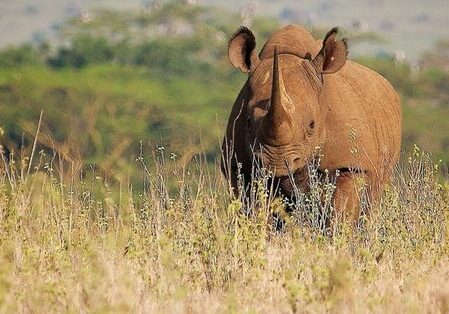In Borneo, work is about to begin on a 5km-long wildlife corridor between Tabin Wildlife Reserve and Silabukan Forest Reserve in the island’s Malaysian state of Sabah. The corridor, which is around 200m wide, will enable orangutans and other wildlife to move safely between forest reserves through plantations to feed and breed.
“The ecological corridor will ensure that wildlife can move around freely, unrestricted by human activities,” explains Donna Simon, orangutan conservation manager at WWF-Malaysia.
“It’s estimated that there are about 1,000 orangutans in the Tabin Wildlife Reserve and about 50 in the Silabukan Forest Reserve, so connecting the forests is crucial to maintain gene flow between the two populations, particularly for the smaller population.”
At the moment, a few fragments of forest remain alongside a small river, but they don’t offer the sort of forest habitat that orangutans need.
The great apes depend on trees: they feed on their fruits, make nests in their branches and travel around by gliding through the treetops. No orangutans have been spotted yet within the corridor, though a group of elephants has been seen using it to move from Tabin to Silabukan and back again.
Over the next five years, though, we aim to change all that by restoring the native forest. And we know that it’s possible from our experience in another part of Sabah called Bukit Piton Forest Reserve. Unsustainable logging during the 1980s had left the area badly degraded, but around 300 orangutans were still clinging on in isolated scraps of forest.
Beginning in 2007, our colleagues in Malaysia worked with the Sabah Forestry Department to restore an area of 24 sq km, reconnecting these orangutans with another population in a larger area of protected rainforest. Over the following decade, we planted more than 300,000 trees, including many of the fruit trees that orangutans feed on.
Today, Bukit Piton Forest Reserve looks like a tropical rainforest again. Its orangutan population is stable – in fact, judging by the number of sightings of young apes, it seems to be growing.
It’s an inspiring example of how nature can bounce back when we give it a chance. Thanks to all of you, and particularly our orangutan adopters, who are helping us to protect, restore and reconnect the habitats of these amazing animals.
Adopt an orangutan
If you’d like to do even more to support Borneo’s orangutans and the forests they depend on, you can adopt an orangutan
More to explore

Appetite for destruction
The world’s forests are critical to the survival of our planet. Yet our food choices are driving them towards a tipping point. Find out how, together, we can keep these irreplaceable landscapes alive

